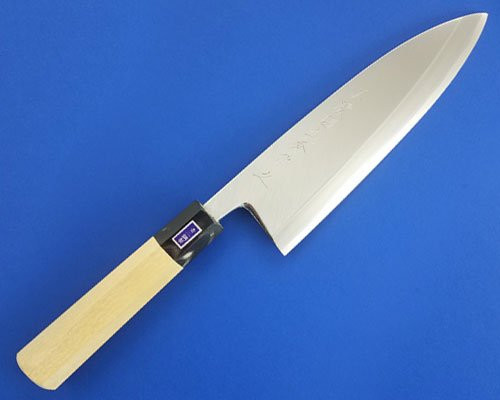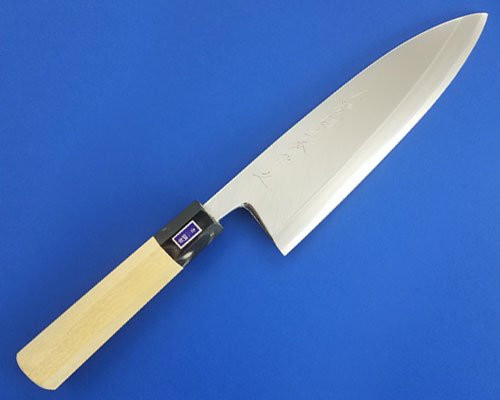Answer
May 08, 2024 - 09:42 AM
The Rockwell hardness can vary from piece to piece on Traditional handmade knives which receive a differential heat treatment. Meaning that the spine is intentionally tempered to be a lower Rockwell hardness than the cutting edge to make this area tougher. Some chefs use the spine of a deba for hammering things like lobster claws or crab legs. On commercial knives using high-tech gas kilns, chilled salt baths and specific temperature controlled equipment, you can expect a homogeneous rockwell hardness from each piece.
With that caveat, the master is very consistent in his work and the Minonokuni Mastsu blue steel blades should be 62/63 Rockwell. This Deba is also Hon-Kasumi (as opposed to kasumi). The term Kasumi is used when two steel types are welded together to form the blade. A softer steel with a lower carbon content builds the blade thickness and is welded to the high-carbon blade steel. Hon-Kasumi means that they used a higher grade soft steel. This is something that this Master feels is better for a Deba to create additional strength.
With that caveat, the master is very consistent in his work and the Minonokuni Mastsu blue steel blades should be 62/63 Rockwell. This Deba is also Hon-Kasumi (as opposed to kasumi). The term Kasumi is used when two steel types are welded together to form the blade. A softer steel with a lower carbon content builds the blade thickness and is welded to the high-carbon blade steel. Hon-Kasumi means that they used a higher grade soft steel. This is something that this Master feels is better for a Deba to create additional strength.





Add New Comment